Wood flooring adds warmth, elegance, and a timeless look to every space, especially the kitchen. However, kitchens provide special issues for wood floors due to frequent activity, wetness, and the possibility of spillage. When choosing the best wood flooring for your kitchen, you should consider longevity, ease of upkeep, and style. In this post, we’ll look at the seven finest options for wood floors in kitchen, so you can make an informed decision for your home.
1. Engineered Hardwood
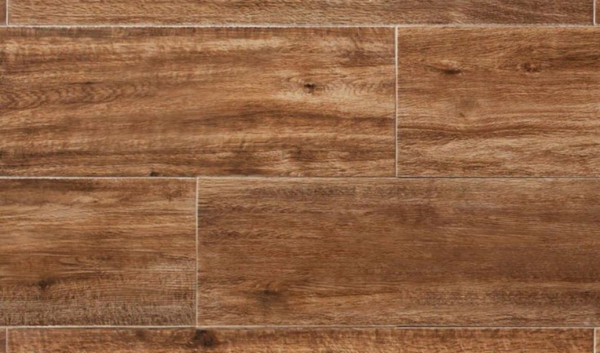
Overview
Engineered hardwood is a popular choice for kitchens because of its stability and durability. Unlike solid hardwood, engineered hardwood is made up of several layers of wood veneer pressed together, with a top layer of real hardwood. This structure makes it less prone to moisture and temperature fluctuations, which are prevalent in kitchens.
Benefits
- Stability: Because engineered hardwood is constructed in layers, there is less chance of warping and swelling.
- Variety: Comes in an extensive array of wood types, board widths, and finishes.
- Simple Installation: Often available in click-and-lock kits for do-it-yourself installation, this system may be put over a variety of subfloors, including concrete.
- Maintenance: Necessitates routine sweeping and infrequent moist cloth wiping. Depending on the thickness of the top layer, it can be refinished multiple times.
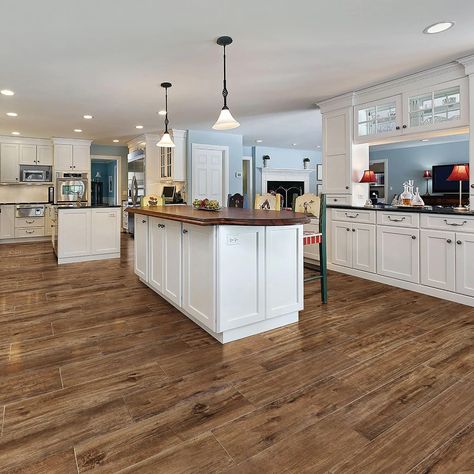
Drawbacks
- Cost: Generally speaking, this is more expensive than vinyl or laminate, but not as pricey as genuine hardwood.
- Refinishing Restrictions: Unlike solid hardwood, it can only be sanded and refinished a limited number of times.
2. Solid Hardwood
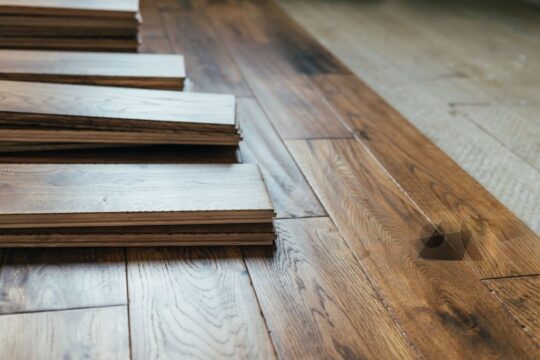
Overview
Benefits
- Durability: Long-lasting, sandable, and refinishable several times to eliminate dents and scratches.
- Aesthetic Appeal: Offers a range of wood types, colors, and finishes for a cozy, welcoming appearance.
- Value: Because of its durability and appeal, adds a substantial amount of value to a home.
Drawbacks
- Moisture Sensitivity: A tendency to expand and contract in response to variations in humidity, perhaps resulting in warping or gapping.
- Maintenance: Necessitates routine attention, such as sweeping, vacuuming, and spill cleanup right away.
- Cost: In general, the cost of purchasing and installation is more than that of engineered hardwood.
3. Bamboo

Overview
Bamboo flooring, while not technically wood, has a comparable appearance and feel. It is a sustainable and environmentally beneficial solution derived from the rapidly growing bamboo plant.
Benefits
- Eco-Friendly: Bamboo grows swiftly and regenerates after harvesting, making it a renewable material.
- Durability: High-quality bamboo is tougher and more resistant to scratches and dents than other hardwoods.
- Aesthetic Variety: Available in a variety of colors and textures, including horizontal, vertical, and strand-woven designs.
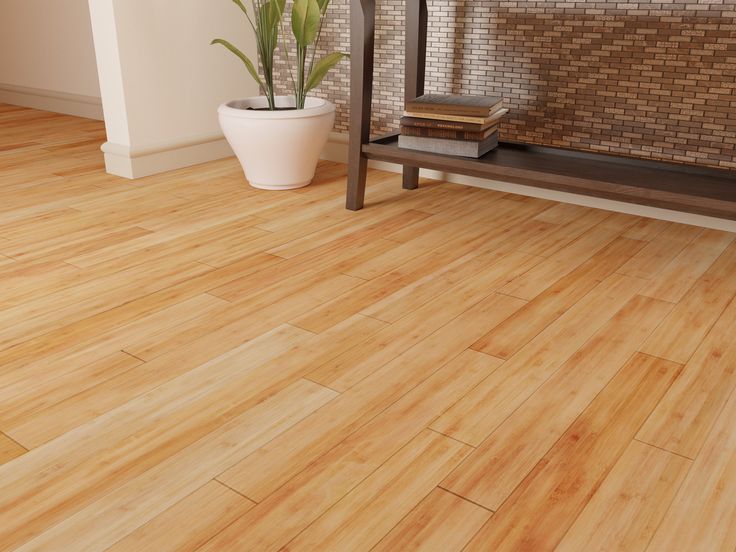
Drawbacks
- Water Sensitivity: Bamboo, like hardwood, is prone to water damage and should be kept dry.
- Quality Variation: Because the quality of bamboo flooring can vary greatly, it’s critical to select a respected brand.
4. Cork

Overview
Cork flooring is another environmentally friendly choice, created from the bark of cork oak trees. It has a unique appearance and a nice, cushioned sensation underfoot.
Benefits
- Comfort: Cork’s natural flexibility makes it a comfortable and warm surface to walk on.
- Insulation: Has excellent thermal and acoustic insulation capabilities, making it quieter and warmer than many other flooring options.
- Durability: Mold, mildew, and pest-resistant, with inherent fire retardant characteristics.
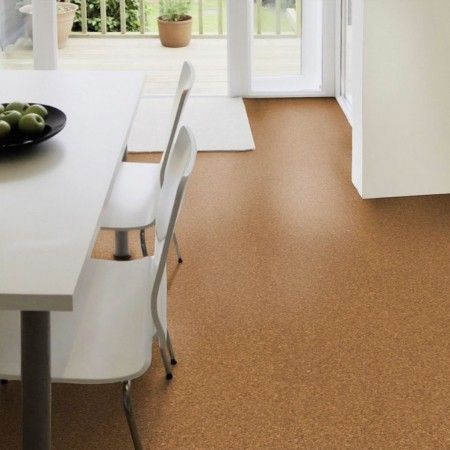
Drawbacks
- Maintenance: To protect against moisture and stains, seal regularly.
- Susceptibility: Heavy furniture and sharp objects might cause dents and scratches.
5. Reclaimed Wood
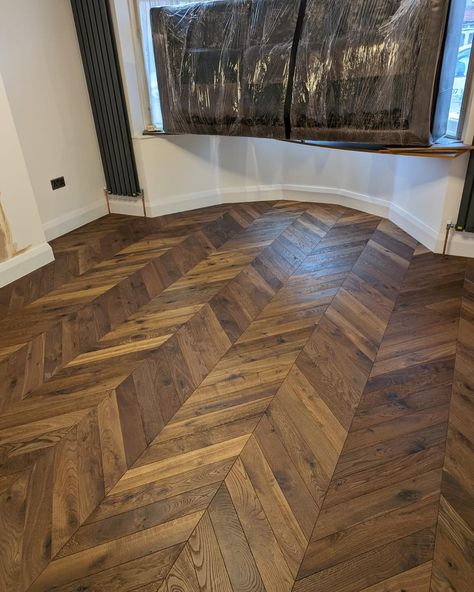
Overview
Reclaimed wood flooring is manufactured from reclaimed wood taken from ancient buildings, barns, and factories. This choice has a rustic, unique appearance and is eco-friendly.
Benefits
- Eco-Friendly: Reuses existing resources, which reduces the need for new lumber.
- Character: Each plank has a distinct history and appearance, lending personality and charm to your kitchen.
- Durability: Old-growth timber is typically denser and more durable than new lumber.
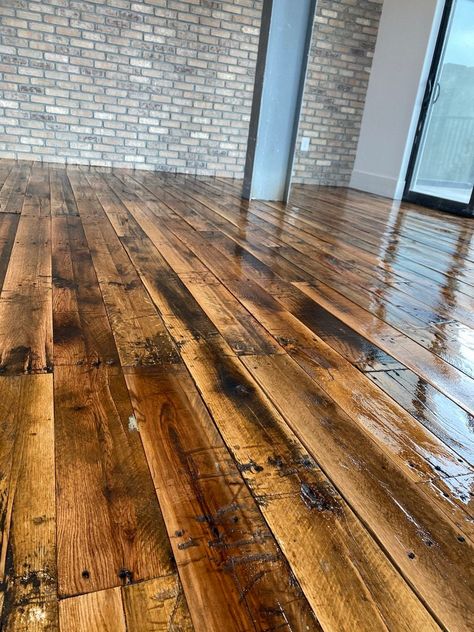
Drawbacks
- Cost: The labor-intensive process of recovering and preparing the timber might make it costly.
- Quality Variation: Quality varies, and it may necessitate more upkeep and care than fresh wood.
6. Laminate Wood Flooring
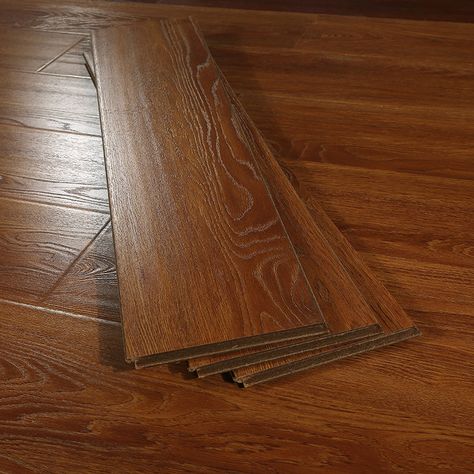
Overview
Laminate wood flooring is a synthetic product that has the appearance of real wood. It is made up of several layers, including a photographic layer that mimics the appearance of wood grain.
Benefits
- Affordability: Typically less expensive than solid or manufactured hardwood.
- Durability: It is resistant to scratches, dents, and fading, making it ideal for high-traffic environments.
- Ease of Installation: Installation is often made simple by using a click-and-lock method.
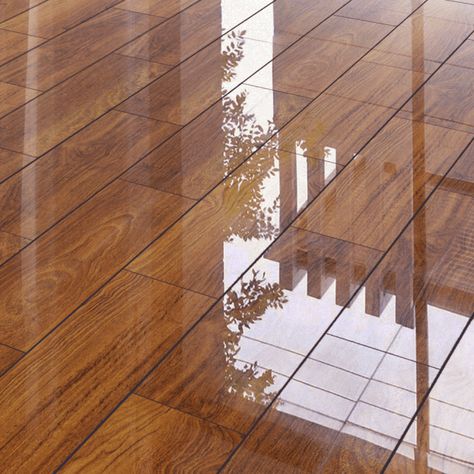
Drawbacks
- Moisture Sensitivity: Although laminate is more resistant to water than hardwood, it can still be damaged by excessive moisture.
- Feel: Does not have the same warmth and naturalness as real wood.
- Refinishing: Cannot be sanded or refinished; damaged boards must be replaced.
7. Luxury Vinyl Plank (LVP)
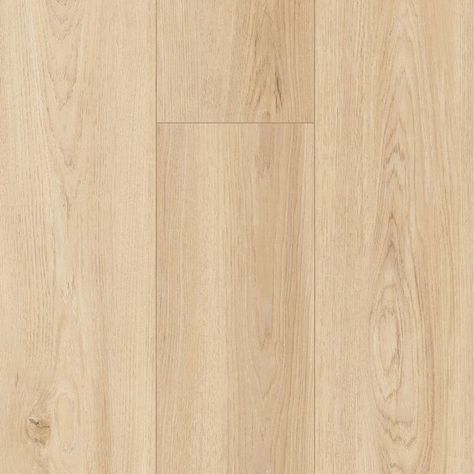
Overview
Benefits
- Waterproof: It is very water resistant, making it excellent for use in kitchens and other moisture-prone locations.
- Durability: Resistant to scratches, stains, and dents.
- Comfort: Softer underfoot than standard tile or hardwood, with some options offering additional padding for added comfort.
Drawbacks
- Aesthetic Limitation: Although LVP appears genuine, it may not fully reproduce the natural beauty and texture of real wood.
- Environmental Impact: Made of synthetic materials, which may be less environmentally friendly than genuine wood options.
Choosing the Right Wood Flooring for Your Kitchen
Considerations
Consider the following aspects while choosing wood floors in kitchen:
- Durability: Kitchens are high-traffic areas prone to spills and collisions. Select a flooring material that will survive these conditions.
- Moisture Resistance: Cooking, cleaning, and spills all contribute to moisture in the kitchen. Choose flooring that can withstand occasional water exposure.
- Maintenance: Consider how much maintenance you’re willing to do. Some wood floors in kitchen require frequent sealing or refinishing, while others require little maintenance.
- Aesthetics: Your kitchen flooring should match the overall design and style of your home. Consider the wood’s color, grain, and finish.
- Budget: Wood flooring prices might vary greatly. Determine your budget and select the option that provides the best balance of quality and price.
Practical Tips
- Use Rugs and Mats: To protect your wood floors in kitchen from spills and damage, place rugs or mats in high-traffic areas like in front of the sink or stove.
- Clean Spills Immediately: To avoid water damage, wipe up spills immediately.
- Regular Cleaning: Clean the surface on a regular basis by sweeping or vacuuming to eliminate dirt and debris that can scratch it. For more thorough cleaning, use a damp mop and a wood-safe cleaner.
- Furniture Pads: To avoid scratches and dents, place felt pads under furniture legs.
Final Thoughts
Choosing the ideal wood flooring for your kitchen requires balancing beauty, durability, and maintenance. Engineered hardwood provides solidity and variation, whereas solid hardwood has timeless beauty and permanence. Bamboo and cork are environmentally friendly materials with distinct advantages, while salvaged wood adds character and history to your home. Laminate wood flooring and luxury vinyl plank offer long-lasting and beautiful options for homes on a tight budget. By considering various hardwood floor colors, along with your specific needs and preferences, you can select the best wood flooring for your kitchen.

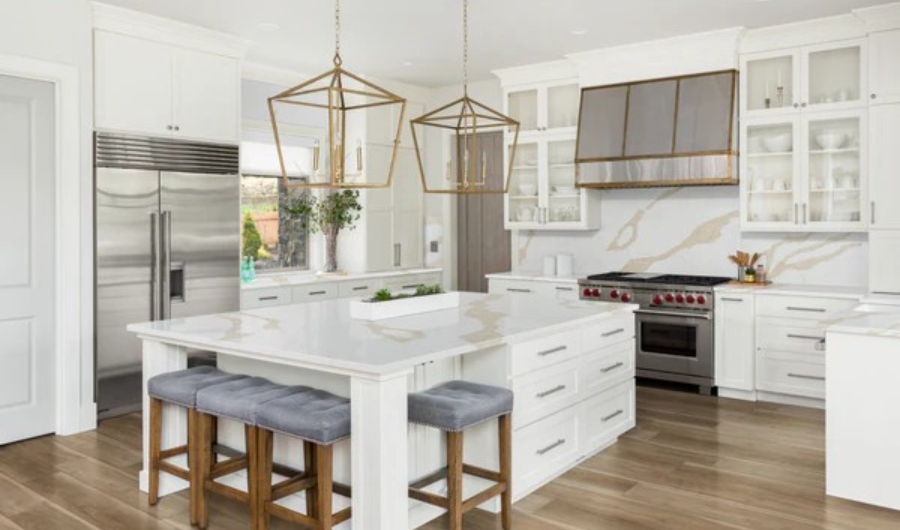

Leave a Reply